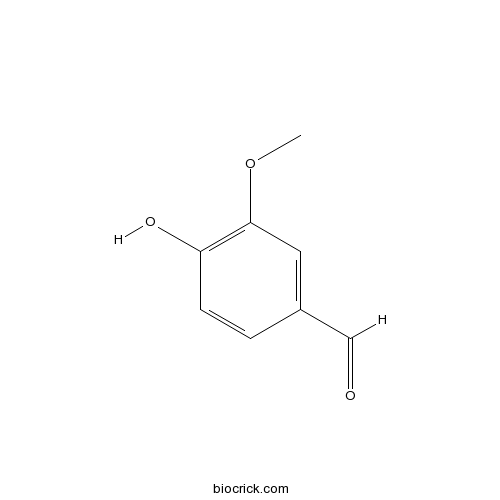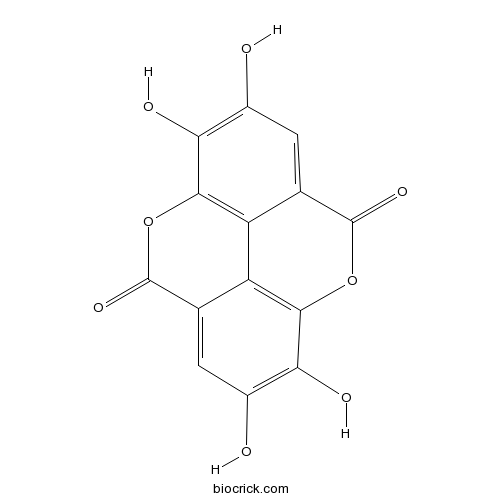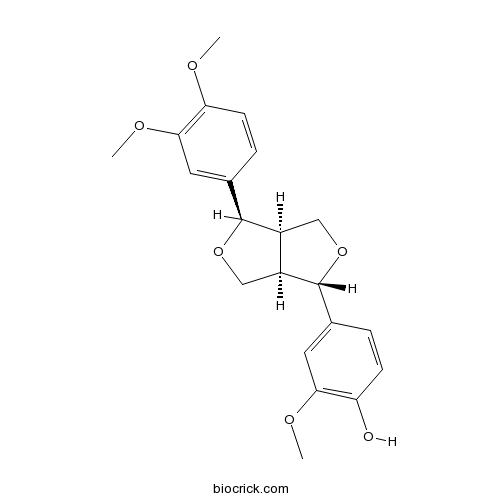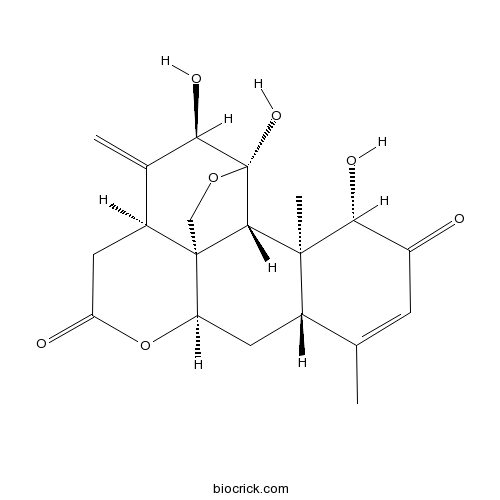Ailanthus altissima
Ailanthus altissima
1. The products in our compound library are selected from thousands of unique natural products; 2. It has the characteristics of diverse structure, diverse sources and wide coverage of activities; 3. Provide information on the activity of products from major journals, patents and research reports around the world, providing theoretical direction and research basis for further research and screening; 4. Free combination according to the type, source, target and disease of natural product; 5. The compound powder is placed in a covered tube and then discharged into a 10 x 10 cryostat; 6. Transport in ice pack or dry ice pack. Please store it at -20 °C as soon as possible after receiving the product, and use it as soon as possible after opening.
Natural products/compounds from Ailanthus altissima
- Cat.No. Product Name CAS Number COA
-
BCN2605
Vanillin121-33-5
Instructions

-
BCN5533
Ellagic acid476-66-4
Instructions

-
BCN2653
Phillygenin487-39-8
Instructions

-
BCN4531
Ailanthone981-15-7
Instructions

Structurally Diverse Highly Oxygenated Triterpenoids from the Roots of Ailanthus altissima and Their Cytotoxicity.[Pubmed: 30106297]
None
Less safety for more efficiency: water relations and hydraulics of the invasive tree Ailanthus altissima (Mill.) Swingle compared with native Fraxinus ornus L.[Pubmed: 29982793]
Invasion of natural habitats by alien trees is a threat to forest conservation. Our understanding of fundamental ecophysiological mechanisms promoting plant invasions is still limited, and hydraulic and water relation traits have been only seldom included in studies comparing native and invasive trees. We compared several leaf and wood functional and mechanistic traits in co-occurring Ailanthus altissima (Mill.) Swingle (Aa) and Fraxinus ornus L. (Fo). Aa is one of the most invasive woody species in Europe and North America, currently outcompeting several native trees including Fo. We aimed at quantifying inter-specific differences in terms of: (i) performance in resource use and acquisition; (ii) hydraulic efficiency and safety; (iii) carbon costs associated to leaf and wood construction; and (iv) plasticity of functional and mechanistic traits in response to light availability. Traits related to leaf and wood construction and drought resistance significantly differed between the two species. Fo sustained higher structural costs than Aa, but was more resistant to drought. The lower resistance to drought stress of Aa was counterbalanced by higher water transport efficiency, but possibly required mechanisms of resilience to drought-induced hydraulic damage. Larger phenotypic plasticity of Aa in response to light availability could also promote the invasive potential of the species.
Anti-Tobacco Mosaic Virus Quassinoids from Ailanthus altissima (Mill.) Swingle.[Pubmed: 29953225]
None
Chipping to Destroy Egg Masses of the Spotted Lanternfly, Lycorma delicatula (Hemiptera: Fulgoridae).[Pubmed: 29868780]
A chipping study was conducted during the winter of 2015 in Berks County, Pennsylvania, to determine efficacy against field collected egg masses of the spotted lanternfly, Lycorma delicatula (White) (Hemiptera: Fulgoridae). Infested Ailanthus altissima Swingle (Sapindales: Simaroubaceae) trees in eastern Pennsylvania were felled and egg masses were counted. Sections were either chipped or allowed to remain intact as controls. Chipped material and intact wood controls were placed in screened barrels and monitored for emergence. No L. delicatula nymphs were found in the chipped treatment, as opposed to hundreds of nymphs per barrel in the intact control treatment. We conclude that mid-winter chipping, using the standard 1-inch in 2-dimension chip size, is a quarantine safe mitigation method suitable for treating wood infested with L. delicatula egg masses.
Control of Eucryptorrhynchus scrobiculatus (Coleoptera: Cuculionidae), a Major Pest of Ailanthus altissima (Sapindales: Simaroubaceae), Using a Modified Square Trap Net.[Pubmed: 29684194]
Eucryptorrhynchus scrobiculatus (Motschulsky) (Coleoptera: Cuculionidae) is a borer that mainly attacks the tree of heaven, Ailanthus altissima (Mill.) Swingle (Sapindales: Simaroubaceae), and is one of the most damaging forestry pests in China. We developed a trap net for entangling and immobilizing soil-emerging weevils in order to reduce their impact. Recapture rates of weevils in the laboratory was significantly higher with nylon netting of 9, 10, or 11 mm mesh sizes than larger sizes, and these sizes were used to make trial nets for preventing weevil emergence from the soil around impacted trees in the field. Nets were 2 × 2 m with a reinforced border and Velcro-closable, radial slit which allowed the net to be arranged around the base of the tree while producing an unbroken barrier beneath the soil surface (i.e., a modified square trap net, MSTN). Recapture rates of weevils released in the soil did not differ among the MSTNs of 9, 10, or 11 mm mesh sizes. MSTN treatments significantly reduced emergence by naturally-occurring weevils from the soil surrounding trees and reduced numbers of weevils caught in population monitoring traps deployed in treated stands. The results demonstrated that MSTNs might be used to manage of E. scrobiculatus.
The Complete Chloroplast Genome Sequence of Tree of Heaven (Ailanthus altissima (Mill.) (Sapindales: Simaroubaceae), an Important Pantropical Tree.[Pubmed: 29561773]
None
Fingerprint analysis and pharmacological evaluation of Ailanthus altissima.[Pubmed: 29484427]
Ailanthus altissima (AA) has been used in various anticancer prescriptions and showed excellent therapeutic effect. However, there is no report on the method of quality control and the anti-glioblastoma activity. In this study, we used a combinative method approach consisting of chromatographic fingerprinting and quantitative methods to analyze quality of different samples. The anti-glioblastoma activity and the possible mechanisms were studied by pharmacological methods. The samples were separated on a Kromasil 100-5 C18 column and the flow rate was 0.8 ml/min at 25˚C. The mobile phase was composed of 1% formic acid and 1% methanol-water at a flow rate of 0.8 ml/min. The method was validated and applied to the quantification of different samples. Ten batches of AA from different provinces in China were detected, and we found that the contents of Ailanthone (AT) ranged from 0.21-1.78 mg/g and the relative retention times were similar in different origins. Ten batches of AA were analyzed by the high-performance liquid chromatography (HPLC) fingerprinting method and 19 common peaks were detected. The similarity of 10 batches is <1.5%. The peak areas in different samples were significantly different (0.682-0.954). We also found that AA induced oxidative stress first in U87 cells, then induced ER stress, finally activated the caspases which caused cell apoptosis. In conclusion, a method combining chromatographic fingerprinting and quantitative analysis can be used to control the quality of AA. AA could be used as a medicine or a constituent part of herb prescription to treat glioblastoma.


